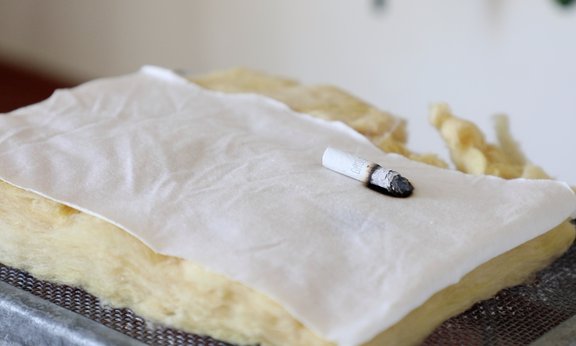Textile is more than just fabric. At the Research Institute for Textile Chemistry and Textile Physics in Dornbirn, scientists explore all facets of fabrics and investigate new ways of recycling textiles and making fibers usable in new ways. An item of clothing rarely consists of pure material. Even if a product is made of cotton, buttons or seams are made of other materials and thus cannot be recycled uniformly. The Textile Competence Center Vorarlberg (tccv) focuses on the investigation of high-performance textile materials. "One of the questions that we at tccv deal with is how to separate and reuse the different components. In order to avoid waste, we could take care during the design stage that the individual components can be separated later," says Tung Pham, head of the Institute of Textile Chemistry and Textile Physics, who is working with his team to recover the raw material for new fibers from textile waste.
Fiber in the cycle
A functional jacket popular with hikers is a complex product consisting of multi-components with a high-performance coating, membranes and other materials. Velcro fasteners or a zip and buttons are also included. Even a classic woollen hat usually consists of a mixture of wool and polyamide fibers to ensure the strength and stability of the fibers. A cap is subject to heavy wear and must meet other criteria such as strength or the washability of the product in addition to wearing comfort and the regulation of heat and moisture. If the cap is no longer used, the fibers cannot be separated from each other again without damage. Pham and his team have now developed a new concept for separating wool from polyamide and then spinning new fibers from both components. "Using an environmentally friendly solvent developed by us, it is possible to separate the polyamide from wool and then, in a further step, to spin a fiber from it again. Similar steps have so far been taken with chemicals, some of which are toxic. In our research, for example, we use water-based chemicals," says Pham, who explains that a central focus at the research institute is on investigating the chemistry at the interfaces between different materials. In the solvent developed by the scientists, the connecting hydrogen bonds between the polymer chains are destroyed with ions, but without damaging the polymer structure. After the separation of polyamide and wool, the polymer chains can again be connected to each other via hydrogen bonds. "The result is that we have pure wool and pure polyamide again, so that we can produce new fabrics from them again," explains the expert in textile chemistry and textile physics, who makes it clear that research in this area is to be further intensified. The aim is to achieve textile circularity. "There are already good concepts for producing fibers from recycled PET bottles, for example. But to produce polyamide fibers again from textiles containing polyamide and thus close the loop, that is still new," says Pham. The experts are still investigating the concept in the laboratory, but the process is expected to be used in industry in the future. The scientists are also working on modifying biobased materials in such a way that they adopt the properties of synthetic fibers, such as hydrophobicity or balanced heat regulation. In this way, the materials would also be naturally degradable without the need for complex separation of the fibers.
Lifesavers and environmental protection
The fields of application for intelligent and technical textiles are many and varied: they are, for example, in medicine and care. "We are currently working on a concept for monitoring stroke patients in rehabilitation at home using a sensor in a T-shirt. ECG, temperature and heart rate are measured. The challenge is that the corresponding leads to the various sensors must not be rigid and that the garment must still be comfortable to wear," explains Pham, who is currently working with his team to produce a prototype of the new textile functional clothing. In another area, the scientists at the Research Institute for Textile Chemistry and Textile Physics in Dornbirn are working on optimizing geotextiles. "To prevent landslides, especially after construction work has been completed, mesh wire nets are currently being used in combination with a plastic structure to protect the sown plants that are planted to stabilize the slope," says Pham. In research at the institute, nets are constructed that break down after two to three years after the trees have taken root.

